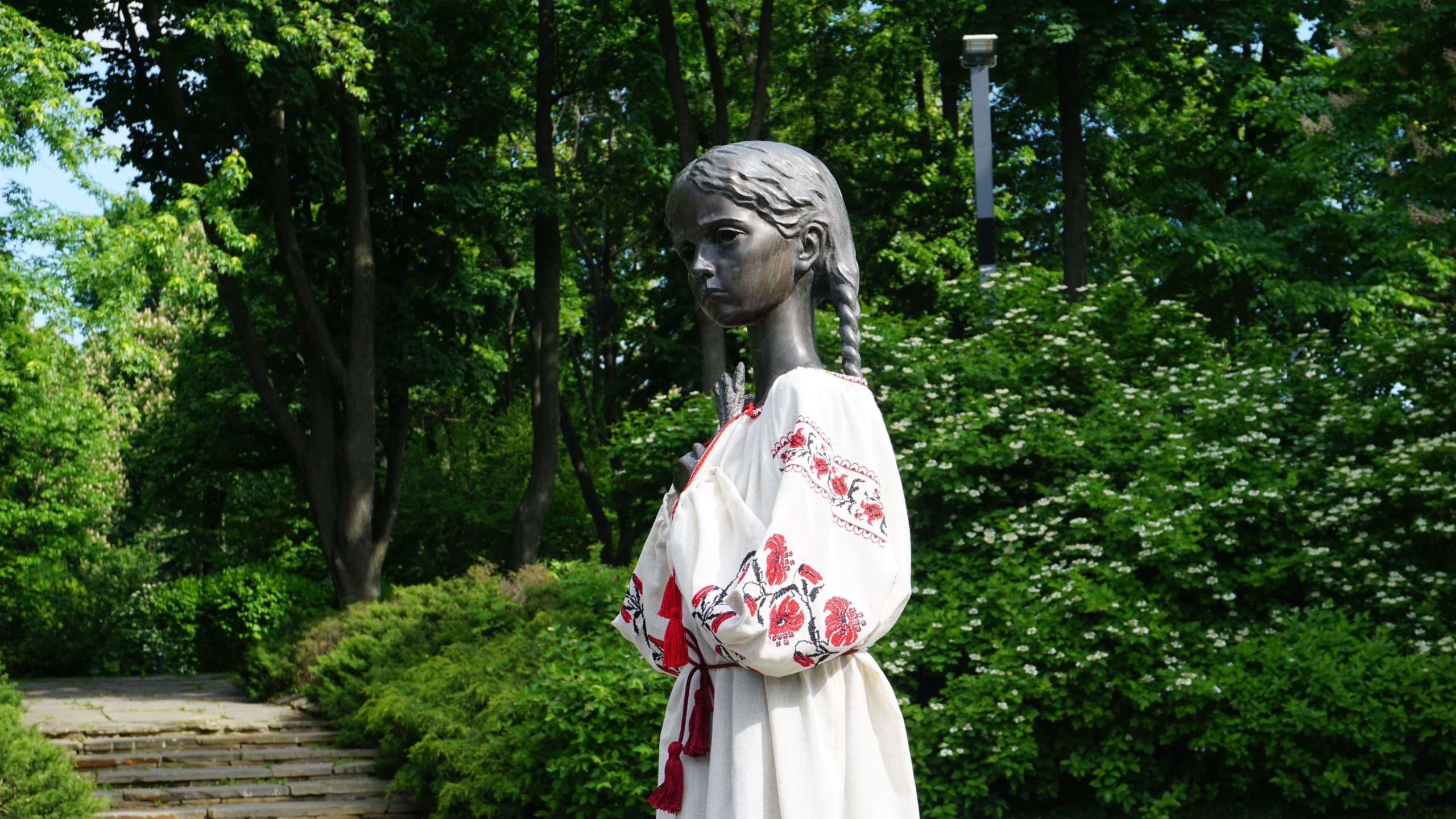On Vyshyvanka Day, the sculpture “Bitter Memory of Childhood” “put on” an embroidered shirt for the second time
Today, on the 16th of May, our sculpture “Bitter Memory of Childhood” once again “put on” an embroidered shirt. With this action, we honour Sumy Oblast, one of the regions that survived the Holodomor. However, today, it suffers from constant enemy shelling. As a result, entire villages are destroyed, people die and are maimed. Housing, civil infrastructure and the cultural heritage of the region are destroyed. Constant danger forces residents to leave their homes and evacuate to safer places.
The parallels between the past and the present are obvious – at one time, the villages of the Sumy region were emptied due to the Holodomor, and today, they are devastated by a terrible war. It is especially painful for us to realise this because, in the border areas of Sumy Oblast, we never had the opportunity to go on expeditions, to record the Holodomor witnesses of the Holodomor, or look for potential exhibits for our museum.
Ukraine and the world traditionally commemorate the Holodomor victims on the fourth Saturday of November. But it is worth remembering that the greatest mortality from famine was precisely in the spring and summer, when people were extremely exhausted, and irreversible changes occurred in their bodies, leading to death.
Thus, in the village of Pisky, Buryn District, Sumy region, a rare document was found quite by accident – an extract from the book of death registrations from January to August 1933 (most of such documents were destroyed). If we carefully look at this martyrology, we will see that the most deaths were recorded in May, June and July 1933. On some days, there were 20 or even more dead! For example, on the 16th of May, six deceased were recorded there, and on the 22nd of May – 24! In total, 1184 people were recorded in this list. And it is far from complete because it covers only 7.5 months of the year.
Honouring the Sumy region today, with this post, we continue the series of publications about the Holodomor and modern crimes of the aggressor country committed in this region. We will also talk about the most interesting exhibits from our stock collection, which represent the Sumy region.
